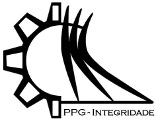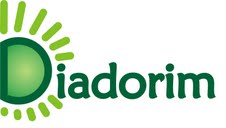MODELO BIDIMENSIONAL CONTÍNUO-DESCONTÍNUO DE FALHA PARA MATERIAIS QUASE-FRÁGEIS
DOI:
https://doi.org/10.26512/ripe.v2i14.21366Keywords:
Mecânica do Dano Contínuo. Modelo de Zona Coesiva. Materiais quasefrágeis. Propagação de trincas. MEFG.Abstract
Esta pesquisa teve como objetivo formular e implementar um modelo de dano contínuo-descontínuo (com transição para fratura), por meio do Método dos Elementos Finitos Generalizados, capaz de predizer falhas em estruturas de materiais quase-frágeis. A mais importante contribuição é a criação de um modelo capaz de simular numericamente a resistência de membros estruturais sob falhas de maneira eficiente, baseado em uma lei de evolução de dano que utiliza apenas parâmetros físicos, que podem ser obtidos por meio de ensaios de resistência e fratura, sem a necessidade de calibração adicional do modelo. A validação do mesmo se deu por intermédio da comparação com resultados experimentais retirados do ensaio de flexão em três pontos em viga com entalhe central. Os resultados obtidos comprovaram a eficiência e acurácia do modelo na previsão do comportamento de ruptura. O modelo consegue fornecer resultados com uma precisão equivalente à de outros modelos encontrados na literatura, porém utilizando um número bem reduzido de elementos na malha.
References
Babuška, I.; Caloz, G.; Osborn, J. E. Special finite element method for a class second order elliptic problems with rough coefficients. SIAM Journal on Numerical Analysis, v. 31, n. 4, p. 945 ”“ 981, 1994.
Babuška, I.; Melenk, J. M. The partition of unity method. International Journal for Numerical Methods in Engineering, v. 40, p. 727-758, 1997.
Barenblattt, G. I. The formation of equilibrium cracks during brittle fracture: general ideas and hypotheses, axially symmetric cracks. Journal of Applied Mathematics and Mechanics, Vol. 23, pp. 622- 636, 1959.
Bazant, Z. P. Concrete fracture models: testing and practice. Engineering Fracture Mechanics, 29:165-205, 2002.
Bazant, Z. P.; Planas, J. Fracture and Size Effect in Concrete and Other Quasi-brittle Materials. CRC Press, 1998.
Belytschko, T.; Black, T. Elastic crack growth in finite elements with minimal remeshing.
International Journal for Numerical Methods in Engineering, Vol. 45, No. 5, pp. 601”“ 620, 1999.
Duarte, C. A.; Hamzeh, O. N.; Liszka, T. J.; Tworzydlo, W.W. A generalized finite element method for the simulation of three-dimensional dynamic crack propagation. Computer Methods in Applied Mechanics and Engineering, v. 190, n. 15-17, p. 2227”“2262, 2001.
Duarte, C. A.; Oden, J. T. An h-p adaptive method using clouds. Computer Methods in Applied Mechanics and Engineering, v. 139, n. 1”“4, p. 237-262, 1996.
Duarte, C. A.; Oden, J. T. Hp clouds ”“ a meshless method to solve boundary value problem. Technical Report 9505, TICAM, University of Texas at Austin, May 1995.
Dugdale, D. S. Yield of steel sheets containing slits. Journal of the Mechanics and Physics and Solids, Vol. 8, pp. 100-104, 1960.
de Borst R.; Remmers, J. J. C.; Needleman, A.; Abellan, M-A. Discrete vs smeared crack models for concrete fracture: bridging the gap. International Journal for Numerical and Analytical Methods in Geomechanics, 28(7”“8):583”“607, 2004.
Evangelista Jr., F.; Roesler, J. R.; Proença, S. P. B. Three-dimensional cohesive zone model for fracture of cementitious materials based on the thermodynamics of irreversible processes. Engineering Fracture Mechanics, v. 97, p. 261-280, 2013.
Geers, M. G. D. Experimental Analysis and Computational Modelling of Damage and Fracture. PhD thesis, Eindhoven University of Technology, 1997.
Hanson, J. H.; Ingraffea, A. R. Using Numerical Simulations to Determine the Accuracy of the Size - Effect and Two-Parameter Data Reduction Methods for Fracture Toughness Tests of Concrete. Engineering Fracture Mechanics, v. 70, pp. 1015-1027, 2002.
Hofstetter G.; Meschke G. Numerical modeling of concrete cracking. International Centre for Mechanical Sciences. vol. 532. Springer Wien New York, 2011. ISBN:987-3-7091-0896- 3 [chapter 1].
Kim, J.; Duarte, C. A. A new generalized finite element method for two-scale simulations of propagating cohesive fractures in 3-D, International Journal for Numerical Methods in Engineering, Vol. 104, No. 13, pp. 1139-1172, 2015.
Lemaitre, J.; Chaboche, J. L. Mechanics of solid materials. Cambrige University Press, 1990.
Mariani, S, Perego U. Extended finite element method for quasi-brittle fracture. International Journal for Numerical Methods in Engineering, 58(1):103”“26, 2003.
Mazars, J. Application de la mécanique de l’éndommagement au comportementnon lineaire e à la rupture du béton de structure. Thèse de Doctorat d’État, Université de Paris VI, 1984.
Mazars, J.; Pijaudier-Cabot, G. Continuum damage theory - application to concrete. Journal of Engineering Mechanics, 115:345.365, 1989.
Melenk, J. M.; Babuska, I. The partition of unity finite element method: Basic theory and applications. Computer Methods in Applied Mechanics and Engineering, v. 139, n. 1-4, p. 289-314, 1996.
Moës N.; Dolbow J.; Belytschko T. A finite element method for crack growth without remeshing. International Journal for Numerical Methods in Engineering, 46(1):131-150, 1999.
Oden, J. T.; Duarte, C. A.; Zienkiewicz, O. C. A new cloud-based hp finite element method. Computer Methods in Applied Mechanics and Engineering, v. 153, n. 1-2, p. 117-126, 1998.
Oliver, J. A consistent characteristic length for smeared cracking models. International Journal of Numerical Methods in Engineering, vol.28, n. 2, p.461-474, 1989.
Park, K.; Paulino, G. H.; Roesler, J. R. A unified potential-based cohesive model of mixedmode fracture, Journal of the Mechanics and Physics of Solids, v. 57, n. 6, p. 891-908, 2009.
Proença, S. P. B.; Torres, I. Generalized Finite Element method for Nonlinear Three dimensional Analysis of Solids. International Journal of Computational Methods, v. 5, p. 37-62, 2008.
Roesler, J. R.; Paulino, G. H.; Park, K.; Gaedicke, C. Concrete Fracture Prediction Using Bilinear Softening. Cement and Concrete Composites, Vol. 29, No. 4, pp. 300-312, 2007a.
Roesler, J. R.; Paulino, G. H.; Gaedicke, C.; Bordelon, A.; Park, K. Fracture behavior of functionally graded concrete materials for rigid pavements. Transp Res Rec, 2037:40”“50, 2007b.
Rots, J. G.; Blaauwendraad, J. Crack models for concrete: Discrete or smeared? Fixed, multidirectional or rotating? HERON, 34(1):3”“59, 1989.
Schlangen E. Experimental and numerical analysis of fracture processes in concrete. Ph.D. Thesis, Delft University of Technology, 1993.
Simone, A. Continuous discontinuous modeling of failure. Ph.D. thesis. University of Delft, The Netherlands, 2003.
Simone, A.; Wells, G. N.; Sluys, L. J. From continuous to discontinuous failure in a gradientenhanced continuum damage model. Computer Methods in Applied Mechanics and Engineering, v. 192, p. 4581 ”“4607, 2003.
Tejchman, J.; Bobinski, J. Continuous and discontinuous modelling of fracture in concrete using FEM. Springer series in geomechanics and geoengineering. Berlin: Springer; 2013, DOI 10.1007/978-3-642-28463-2.
Wells, G. N.; Sluys, L. J. A new method for modeling cohesive cracks using finite elements. International Journal for Numerical Methods in Engineering 50: 2667-2682, 2001.
Wells, G. N.; Sluys, L. J.; De Borst, R. Simulating the propagation of displacement discontinuities in a regularised strain-softening medium. International Journal for Numerical Methods in Engineering, 53(5):1235”“1256, 2002.
Xu, X. P.; Needleman, A. Numerical Simulations of Fast Crack Growth in Brittle Solids. Journal of Mechanics and Physics of Solids, Vol. 42, No. 9, pp. 1397”“1434, 1994.
Downloads
Published
Issue
Section
License
Given the public access policy of the journal, the use of the published texts is free, with the obligation of recognizing the original authorship and the first publication in this journal. The authors of the published contributions are entirely and exclusively responsible for their contents.
1. The authors authorize the publication of the article in this journal.
2. The authors guarantee that the contribution is original, and take full responsibility for its content in case of impugnation by third parties.
3. The authors guarantee that the contribution is not under evaluation in another journal.
4. The authors keep the copyright and convey to the journal the right of first publication, the work being licensed under a Creative Commons Attribution License-BY.
5. The authors are allowed and stimulated to publicize and distribute their work on-line after the publication in the journal.
6. The authors of the approved works authorize the journal to distribute their content, after publication, for reproduction in content indexes, virtual libraries and similars.
7. The editors reserve the right to make adjustments to the text and to adequate the article to the editorial rules of the journal.









